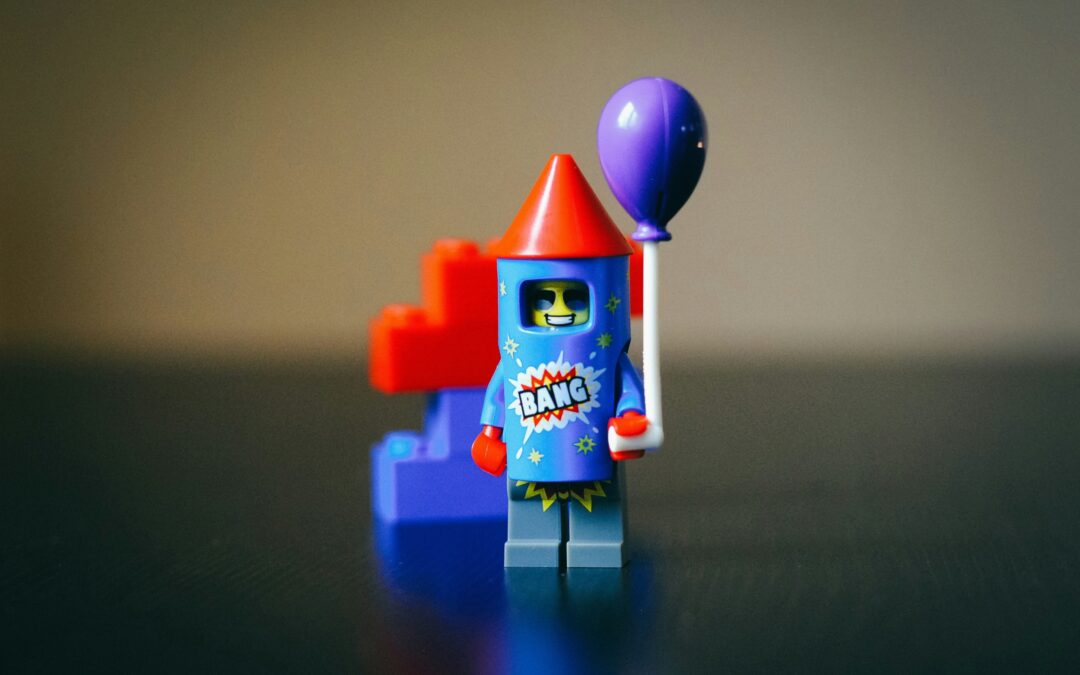
by Robyn Bolton | Feb 12, 2025 | Innovation, Leadership
When times get tough, the first things most companies cut are the “luxuries.” That includes their innovation teams. But as companies dismantle their labs, teams, and other structures, a crucial question emerges: Who’s working on growth?
Cutting innovation teams doesn’t just cut a branch off the org chart. It eliminates capabilities that are fundamental to sustaining and growing a business and culture.
So why throw the baby out with the bathwater? Here’s a scenario that might sound familiar: Your innovation team created something brilliant. The prototype works, early users love it, and the business case is solid. But six months later, it’s gathering dust because no one in the core business knew how to—or wanted to—move it forward.
This isn’t a failure of innovation. It’s a failure of integration.
Wait, I thought integrating innovation with the core business was bad
The traditional innovation team structure – a separate unit with its own space, processes, and culture – solved one problem but created another.
As innovation teams were given the freedom to think differently, they were also given shiny, new, fun, and amenity-filled spaces cordoned off from everyone else. Meanwhile, “everyone else” was stuck in their usual offices and doing the usual things that keep the business running and fund the innovation team’s luxe life.
The resulting us-versus-them mentality fueled resentment, making it easy for “everyone else” to stonewall the innovation team’s efforts by pointing out flaws, uncertainties, and risks.
To be fair, they weren’t doing this to be mean – they were protecting the business. The innovators, meanwhile, grew frustrated, sought help from higher-ups who were happy to help until times got tough and cuts had to be made.
So, one team should work on both innovation and the core business?
Just like we need multiple words to describe the what and why of innovation, we need different operating models that embed innovation capabilities across the organization while protecting the space for them to flourish.
Here’s what it looks like:
- For Core Improvements, let your operational teams lead. They know the problems best, but give them innovation tools and methods. Think of this as equipping your existing workforce with new superpowers, not replacing them with superheroes.
- For Adjacent Expansions, create hybrid teams that combine operational experience with innovation expertise. When expanding into new markets or launching new products, you need both an innovative mindset and operational know-how. Neither alone is sufficient.
- For Radical Reinvention, you still need dedicated teams—but not isolated ones. Their job is to create offerings that reinvent the company and the culture that enables everyone to participate. Establish bridges that connect them with business units and enforce quarterly meetings to share progress, insights, and tools.
This isn’t theory.
Companies like Amazon have been doing this for years with their “working backwards” innovation process used by all teams, not just a special innovation unit. When I worked at P&G, the brand teams worked on core improvements, the New Business Development teams (where I worked) physically sat next to the brand teams and worked on Adjacent expansion, and the radical reinvention teams were co-located with R&D at the technical centers.
Put it into practice
Here’s where to start:
- Map your innovation portfolio to understand what types of innovation you need to hit your goals
- Match your team structures to your innovation types
- Start embedding innovation capabilities across the organization
- Create clear paths for innovations to move from idea to implementation
The transition isn’t easy. It requires rethinking roles and reimagining how innovation happens in your organization. But the alternative – watching your innovation investments evaporate because they can’t cross the bridge back to the core business – is far more painful.
What’s your experience? Drop your stories and strategies in the comments. Let’s figure this out together.

by Robyn Bolton | Feb 3, 2025 | Innovation, Tips, Tricks, & Tools
If innovation (the term) is dead and we will continue to engage in innovation (the activity), how do we talk about creating meaningful change without falling back on meaningless buzzwords? The answer isn’t finding a single replacement word – it’s building a new innovation language that actually describes what we’re trying to achieve. Think of it as upgrading from a crayon to a full set of oil paints – suddenly you can create much more nuanced pictures of progress.
The Problem with One-Size-Fits-All
We’ve spent decades trying to cram every type of progress, change, and improvement into the word “innovation.” It’s like trying to describe all forms of movement with just the word “moving.” Sure, you’re moving but without the specificity of words like walking, running, jumping, bounding, and dancing, you don’t know what or how you’re moving or why.
That’s why using “innovation” to describe everything different from today doesn’t work.
Use More Precise Language for What and How
Before we throw everything out, let’s keep what actually works: Innovation means “something new that creates value.” That last bit is crucial – it’s what separates meaningful change from just doing new stuff for novelty’s sake. (Looking at you, QR code on toothpaste tutorials.)
But, just like “dancing” is a specific form of movement, we need more precise language to describe what the new value-creating thing is that we’re doing:
- Core IMPROVEMENTS: Making existing things better. It’s the unglamorous but essential work of continuous refinement. Think better batteries, faster processors, smoother processes.
- Adjacent EXPANSIONS: Venturing into new territory – new customers, new offerings, new revenue models, OR new processes. It’s like a restaurant adding delivery service: same food, new way of reaching customers.
- Radical REINVENTION: Going all in, changing multiple dimensions at once. Think Netflix killing its own DVD business to stream content they now produce themselves. (And yes, that sound you hear is Blockbuster crying in the corner.)
Adopt More Sophisticated Words to Describe Why
Innovation collapsed because innovation became an end in and of itself. Companies invested in it to get good PR, check a shareholder box, or entertain employees with events.
We forgot that innovation is a means to an end and, as a result, got lazy about specifying what the expected end is. We need to get back to setting these expectations with words that are both clear and inspiring
- Growth means ongoing evolution
- Transformation means fundamental system change (not just putting QR codes on things)
- Invention means creating something new without regard to its immediate usefulness
- Problem Solving means finding, creating, and implementing practical solutions
- Value Creation means demonstrating measurable and meaningful impact
Why This Matters
This isn’t just semantic nitpicking. Using more precise language sets better expectations, helps people choose the most appropriate tools, and enables you to measure success accurately. It’s the difference between saying “I want to move more during the day” and “I want to build enough endurance to run a 5K by June.”
What’s Next?
As we emerge from innovation’s chrysalis, maybe what we’re becoming isn’t simpler – it’s more sophisticated. And maybe that’s exactly what we need to move forward.
Drop a comment: What words do you use to describe different types of change and innovation in your organization? How do you differentiate between what you’re doing and why you’re doing it?

by Robyn Bolton | Jan 15, 2025 | Innovation, Leadership, Stories & Examples
I firmly believe that there are certain things in life that you automatically say Yes to. You do not ask questions or pause to consider context. You simply say Yes:
- Painkillers after a medical procedure
- Warm blankets
- The opportunity to listen to brilliant people talk about things that fascinate them.
So, when asked if I would like to attend an Executive Briefing curated by MIT’s Industrial Liaison Program, I did not ask questions or pause to check my calendar. I simply said Yes.
I’m extremely happy that I did because what I heard blew my mind.
Lean is the enemy of learning
When Ben Armstrong, Executive Director of MIT’s Industrial Performance Center and Co-Lead of the Work of the Future Initiative, said, “To produce something new, you need to create a lot of waste,” I nearly lept out of my chair, raised my arms, and shouted “Amen brother!”
He went on to tell the story of a meeting between Elon Musk and Toyota executives shortly after Musk became CEO. Toyota executives marveled at how quickly Tesla could build an EV and asked Musk for his secret. Musk gestured around the factory floor at all the abandoned hunks of metal and partially built cars and explained that, unlike Toyota, which prided itself on being lean and minimizing waste, Tesla engineers focused on learning – and waste is a required part of the process.
We decide with our hearts and justify with our heads – even when leasing office space
John E. Fernández, Director of MIT’s Environmental Solutions Initiative, shared an unexpected insight about selling sustainable buildings effectively. Instead of hard numbers around water and energy cost savings, what convinces companies to pay the premium for Net Zero environments is prestige. The bragging rights of being a tenant in Winthrop Center, Boston’s first-ever Passive House office building, gave developers a meaningful point of differentiation and justified higher-than-market-rate rents to future tenants like McKinsey and M&T Bank.
49% of companies are Silos and Spaghetti
I did a hard eye roll when I saw Digital Transformation on the agenda. But Stephanie Woerner, Principal Research Scientists and Executive Director for MIT’s Center for Information Systems Research, proved me wrong by explaining that Digital Transformation requires operational excellence and customer-focused innovation.
Her research reveals that while 26% of companies have evolved to manage both innovation and operations, operate with agility, and deliver great customer experiences, nearly half of companies are stuck operating in silos and throwing spaghetti against the wall. These “silo and spaghetti companies” are often product companies rife with complex systems and processes that require and reward individual heroics to make progress.
What seems like the safest option is the riskiest
How did 26% of companies transform while the rest stayed stuck or made little progress? The path forward isn’t what you’d expect. Companies that go all-in on operational excellence or customer innovation struggle to shift focus and work in the other half of the equation. But doing a little bit of each is even more risky because the companies often wait for results from one step before taking the next. The result is a never-ending transformation slog that is eventually abandoned.
Academia is full of random factoids
They’re not random to the academics, but for us civilians, they’re mainly helpful for trivia night:
- 50% of US robots are used in the automotive industry
- <20% of manufacturing job descriptions require digital skills (yes, that includes MS Office)
- Data centers will account for 8-21% of global energy demand by 2030
- Energy is 10% of the cost of running a data center but 90% of the cost of mining bitcoin
- Cities take up 3% of the earth’s surface, contain 33% of the population, account for 70% of global electricity consumption, and are responsible for 75% of CO2 emissions
Why say Yes
When brilliant people talk about things they find fascinating, it’s often because those things challenge conventional wisdom. The tension between lean efficiency and innovative learning, the role of emotion in business decisions, and the risks of playing it too safe all point to a fascinating truth: sometimes the most counterintuitive path forward is the most successful.
How have you seen this play out in your work?

by Robyn Bolton | Dec 18, 2024 | Just for Fun
‘Twas the night before launch day, when throughout HQ,
Not a worker had left, there was too much to do;
The plans were laid out by the whiteboard with care,
While our Innovation Chief Sarah planned with great flair;
The team was all nestled all snug at their posts,
While visions of success inspired them the most;
And Sarah in her blazer, so sharp and so bright,
Had just settled in for a long working night,
When out in the hall there arose such a clatter,
She sprang from her desk to see what was the matter.
When what to her wondering eyes should appear,
But the CEO and board, spreading holiday cheer!
“Now, ARCHITECTURE!” they cried, “We need strategy and rules!
Now BEHAVIORS and CULTURE!” – these ABC tools.
“Tell us Sarah,” they said, “how you’ll lead us to glory,
Through bringing new value – tell us your story!”
She smiled as she stood, confidence in her stance,
“The ABCs of Innovation aren’t left up to chance.
Architecture’s our framework, our process and measure,
Our governance model not built at our leisure;
“The Behaviors we foster? Curiosity leads,
With courage and commitment to meet future needs.
And Culture,” she said, with a twinkle of pride,
“Is how innovation becomes our natural stride.”
Her cross-functional team gathered ’round with delight,
Each bringing their skills to help win this big fight:
“From concept to testing, from planning to more,
We’re ready to launch what we’ve worked toward before!”
The CEO beamed and the board gave a cheer,
“This is exactly the progress we’d hoped for this year!
With Architecture to guide us, and Behaviors so strong,
Plus Culture to fuel us – well, nothing could go wrong!”
Then Sarah exclaimed, as they turned out the light,
“Happy launching to all, and to all a good night!
For tomorrow we share what’s been worth all the wait,
Guided by ABCs, we’ll make something great!”

by Robyn Bolton | Nov 12, 2024 | Customer Centricity, Leadership, Stories & Examples
“Now I know why our researchers are so sad.”
Teaching at The Massachusetts College of Art and Design (MassArt) offers a unique perspective. By day, I engage with seasoned business professionals. By night, I interact with budding designers and artists, each group bringing vastly different experiences to the table.
Customer-centricity is the hill I will die on…
In my Product Innovation Lab course, students learn the innovation process and work in small teams to apply those lessons to the products they create.
We spend the first quarter of the course to problem-finding. It’s excruciating for everyone. Like their counterparts in business and engineering, they’re bursting with ideas, and they hate being slowed down. Despite data proving that poor product-market fit a leading cause of start-up failure and that 54% of innovations launched by big companies fail to reach $1M in sales (a paltry number given the scale of surveyed companies), they’re convinced their ideas are flawless.
We spend two weeks exploring Jobs to be Done and practicing interviewing techniques. But their first conversations sound more like interrogations than anything we did in class.
They return from their interviews and share what they learned. After each insight, I ask, “Why is that?” or “Why is that important?
Amazingly, they have answers.
While their first conversations were interrogations, once the nervousness fades, they remember their training, engage in conversations, and discover surprising and wonderful answers.
Yet the still prioritize the answers to “What” over answers to “Why?”
…Because it’s the hill that will kill me.
Every year, this cycle repeats. This year, I finally asked why, after weeks of learning that the answers to What questions are almost always wrong and Why questions are the only path to the right answers (and differentiated solutions with a sustainable competitive advantage), why do they still prioritize the What answers?
The answer was a dagger to my heart.
“That’s what the boss wants to know,” a student explained. “Bosses just want to know what we need to build so they can tell engineering what to make. They don’t care why we should make it or whether it’s different. In fact, it’s better if it’s not different.”
I tried to stay professional, but there was definitely a sarcastic tone when I asked how that was working.
“We haven’t launched anything in 18 months because no one likes what we build. We spend months on prototypes, show them to users, and they hate it. Then, when we ask the researchers to do more research because their last insights were wrong, they get all cra….OOOOHHHHHHHH…..”
(insert clouds parting, beams of sunlight shining down, and a choir of angels here)
“That’s why the researchers are so sad all the time! They always try to tell us the “Whys” behind the “Whats” but no one wants to hear it. We just want to know what to build to get to work. But we could create something people love if we understood why today’s things don’t work!”
Honestly, I didn’t know whether to drop the mic in triumph or flip the table in rage.
Ignorance may be bliss but obsolesce is not
It’s easy to ignore customers.
To send them surveys with pre-approved answers choices that can be quickly analyzed and neatly presented to management. To build exactly what customers tell you to build, even though you’re the expert on what’s possible and they only know what’s needed.
It’s easy to point to the surveys and prototypes and claim you are customer-centric. If only the customers would cooperate.
It’s much harder to listen to customers. To ask questions, listen to answers you don’t want to hear, and repeat those answers to more powerful people who want to hear them even less. To have the courage to share rough prototypes and to take the time to be curious when customers call them ugly.
So, if you want to be happy, keep pretending to care about your customers.
Pretty soon, you won’t have any left to bother you.




